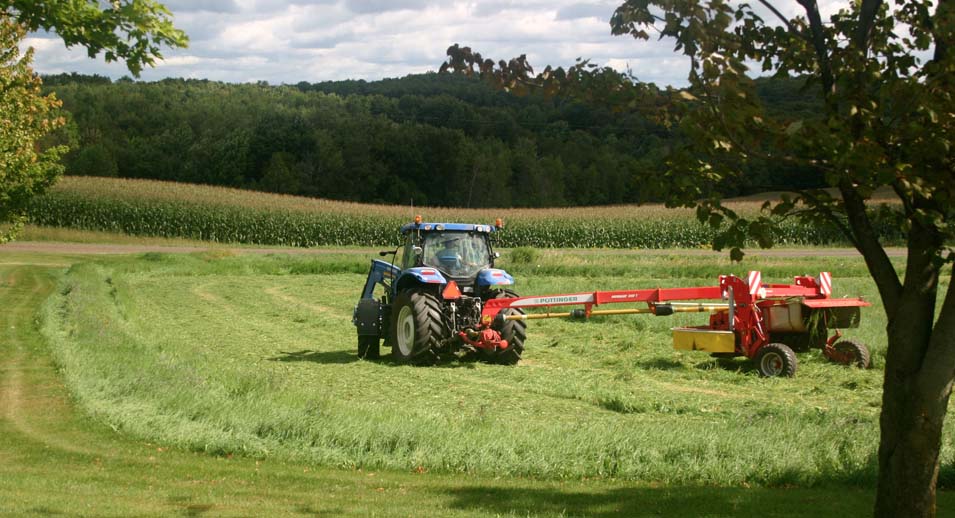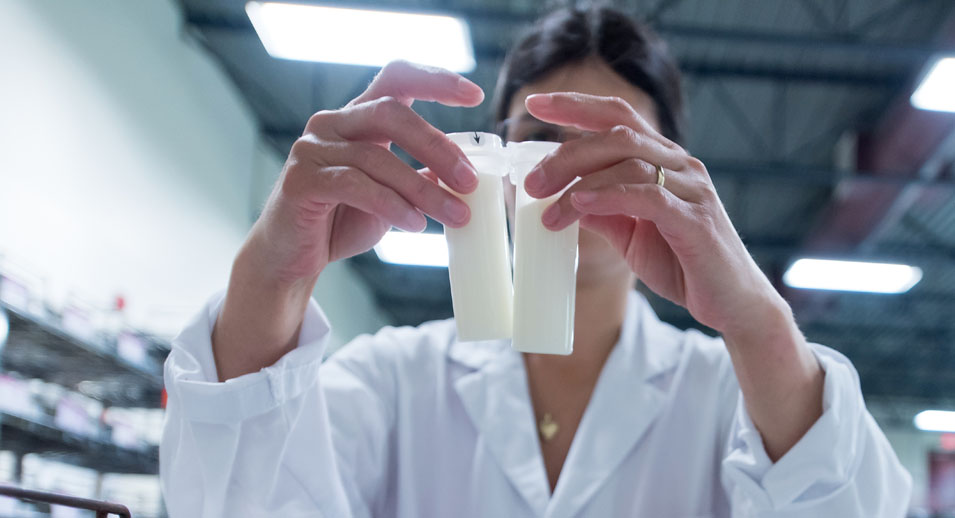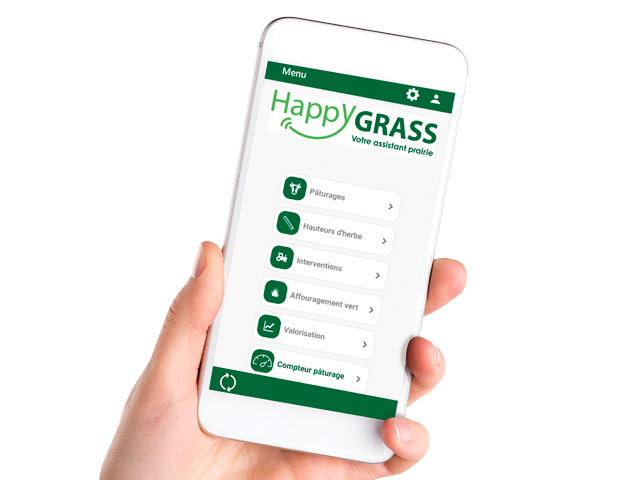Your Best Investment of the Year is to Harvest Quality Forage
- May 20, 2022

Credit photo : Les Producteurs de lait du Québec
Your feed advisor will certainly remind you that your best weapon to mitigate the high cost of concentrates is to harvest your forages at the right stage of maturity. Indeed, a quality forage brings more energy and proteins, which reduces the need for concentrates. But above all, a more digestible forage will be consumed in greater quantity, which has an even greater effect on your profitability.
ADF and NDF are excellent indicators of forage maturity. The target ADF for legumes and grasses is the same: 30% ADF is the best quality for lactating cows.
This is your goal for the season!
Maximizing Forage Consumption Is the Key
Once a quality forage is harvested, it can be maximized in a high forage ration. What is a high forage ration? The answer varies depending on the breed. For the Holstein breed, for example, we aim for 16 kg or more of dry matter in forage per day.
Do you know what the forage consumption is in your herd? It’s relatively easy to check. For chopped silage, you need to know the quantities served per cow and the actual dry matter for each silage. Obviously, you need a moisture tester. For large bales, you need to know the size of the bale and the number of knives on the baler. With this information, Lactanet advisors1 have a convenient spreadsheet that allows them to calculate the weight of a bale in kilograms of dry matter.
The key to feeding this type of ration without decreasing milk production is to have high quality, well-preserved forages and good feeder management. What are the benefits? Better animal health, more milk components, less concentrates in the ration, all without necessarily penalizing productivity. Of course, you must plan to harvest a sufficient volume of forages to implement this strategy.
Some Specific Cases
A growing number of dairy producers know the forage dry matter intake of lactating cows in their herd. Let’s look at some real-life cases. The amount of forage fed to the animals was validated by a Lactanet advisor, and refusals were subtracted (Table 1).
Farm A participated in a milk fat workshop in January of this year. A Lactanet advisor guided the farm in evaluating its feed margin and in calculating forage consumption. The result of 13.3 kg was below the advisor’s expectations. Not surprisingly, the cost of concentrates exceeded the average by $6.74/hl, an impact amounting to over $400 per day for his 200-cow herd. The consultant continued to work with them. Three months later, the results are encouraging. Forage dry matter intake is close to 17 kg and concentrate costs are now only $1.84/hl above average. The improvement amounts to nearly $300 per day.
Farm B had a forage dry matter intake of 12.9 kg and was disappointed with the herd fat test. By trusting their forages and gradually decreasing the inclusion of concentrates, they were able to deliver the same amount of fat while significantly decreasing concentrate purchases. They were even able to remove the protected fat supplement included in the ration at the beginning. What an improvement!
Table 1. Two real cases that show the advantage of knowing the dry matter intake in forages
| Farm | Corn silage | Forages | Milk (kg/j) | Fat (kg/hl) | Fat (kg/j) | Ratio Milk/concentrates |
| A | No | 13.3 | 38.0 | 4.08 | 1.51 | 2.66 |
| A improved | 16.9 | 36.4 | 4.06 | 1.43 | 3.02 | |
| B | Yes | 12.9 | 38.0 | 3.76 | 1.39 | 2.50 |
| B improved | 19.6 | 35.3 | 4.11 | 1.41 | 4.07 |
Let’s look at another herd, Farm C.
This one delivers 100 kg of butterfat per day. They have 77 lactating Holsteins and are feeding 33% ADF forages. What would happen if the forages harvested this year were 30% ADF? The impact of such a change can be calculated using our Dairy Margin Simulation Tool1.
Let’s look at the result in Table 2. We can see that this simple change would allow the company to meet the forage consumption target (≥ 16 kg DM/d). The result would be more milk for every kilogram of concentrate, and thus a significant reduction in concentrate cost. Even if this increases the cost of forages, the margin would still be improved.
Result: $24,780 more in the producer’s pocket each year!
| Initial situation (ADF 33 %) | Optimal situation (ADF 30%) | |
| Forage consumption (kg DM/d) | 15.3 | 16.8 |
| Milk/concentrate ratio (kg/kg) | 3.51 | 4.57 |
| Cost of concentrates ($/hl) | 17.01 | 13.07 |
| Forage cost ($/hl) | 11.74 | 12.88 |
| Feed margin ($/hl) | 59.15 | 63.09 |
| Effect on net income ($/year) | – | +24,780 |
There Is a Wide Range of Tools to Help You
If we simply summarize the previous paragraphs, the quality of forages is a must to reduce the cost of concentrates in the ration and improve your profitability… The upcoming season is therefore an opportunity not to be missed!
There’s almost no excuse for harvesting excessively mature forage. There are a variety of tools to help you. Monitor degree-days (French only) to know when to walk the fields. To determine when to mow, you can rely on the stage of maturity, or use NUTRI-Fourrager, a more precise decision support tool. Remember, your advisors are there to help you.
Enjoy the season!
Caption Available in English. To activate, you can click or tap the CC icon on the video player.












